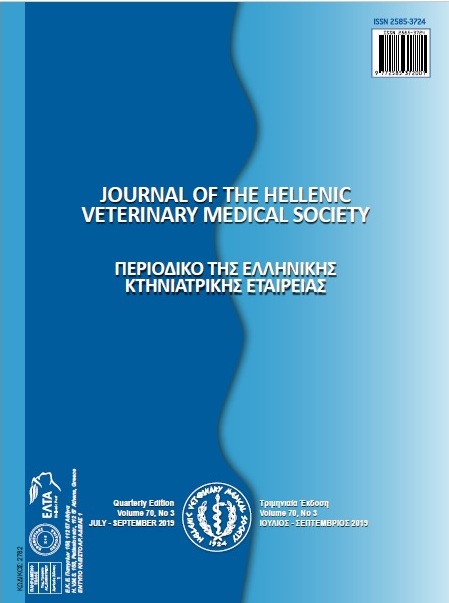Isolation, genotyping and antimicrobial susceptibility of pathogenic Escherichia coli serotypes in ready to eat foods

Abstract
In this study, pathogenic Escherichia coli serotypes (E. coli O157:H7, O26, O111) and their molecular proximity and antimicrobial susceptibility were investigated in RTE foods. A total of 240 samples; consist of 105 stuffed mussel, 56 meatless cig kofte, 54 Russian salad, 25 cheese halva, were analyzed. The conventional culture and serotyping methods for determination of the organisms were performed and further confirmation by PCR was carried out. Confirmed E. coli O157 isolates were genotyped by the enterobacterial repetitive intergenic consensus
(ERIC)-PCR. Antibacterial susceptibility testing of the isolates was performed by disc diffusion method. E. coli was detected in 7 (2.9 %) of 240 samples, including 3 (5.5%) Russian salad, 3 (2.8%) stuffed mussel, 1 (4 %) cheese halva. Two isolates from Russian salad, 1 from stuffed mussel and 1 from cheese halva were identified as E. coli O157 . In addition, stuffed mussel isolate was found to carry stx1 ve hlyA genes whereas one Russian salad isolate carried the stx1 gene. E. coli isolates were found to be resistant to amoxycillin/clavulonic acid, gentamicin and ciprofloxacin, at the rate of 29%, 14% and 29 %, respectively. Only one (14 %) isolate from stuffed mussel was classified as multidrug resistant to three antimicrobials. Furthermore, the isolates, related to O157 and O157:H7, presented different ribotypes in this study. The results provide useful data for the development of public health policy concerning the potential presence of pathogenic antimicrobial resistant E. coli serotypes in RTE foods. Strict surveillance of RTE foods at retail points for emerging pathogens, their antimicrobial resistance patterns and the potential likelihood of cross-contamination is required.Article Details
- How to Cite
-
KARADAL, F., ERTAS ONMAZ, N., HIZLISOY, H., AL, S., TELLI, N., YILDIRIM, Y., & GONULALAN, Z. (2019). Isolation, genotyping and antimicrobial susceptibility of pathogenic Escherichia coli serotypes in ready to eat foods. Journal of the Hellenic Veterinary Medical Society, 70(3), 1661–1668. https://doi.org/10.12681/jhvms.21790
- Issue
- Vol. 70 No. 3 (2019)
- Section
- Research Articles

This work is licensed under a Creative Commons Attribution-NonCommercial 4.0 International License.
Authors who publish with this journal agree to the following terms:
· Authors retain copyright and grant the journal right of first publication with the work simultaneously licensed under a Creative Commons Attribution Non-Commercial License that allows others to share the work with an acknowledgement of the work's authorship and initial publication in this journal.
· Authors are able to enter into separate, additional contractual arrangements for the non-exclusive distribution of the journal's published version of the work (e.g. post it to an institutional repository or publish it in a book), with an acknowledgement of its initial publication in this journal.
· Authors are permitted and encouraged to post their work online (preferably in institutional repositories or on their website) prior to and during the submission process, as it can lead to productive exchanges, as well as earlier and greater citation of published work.


